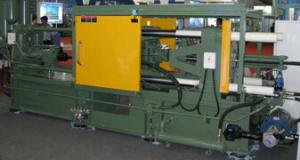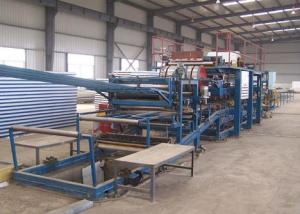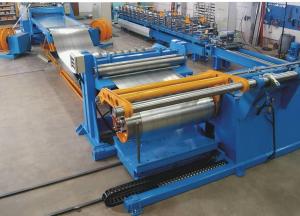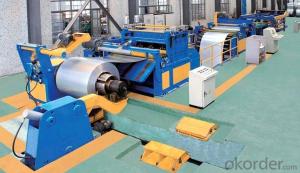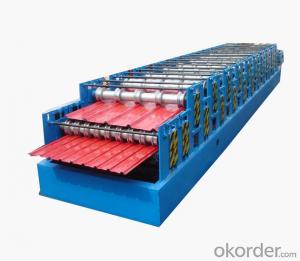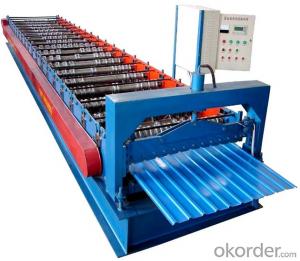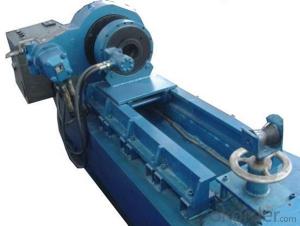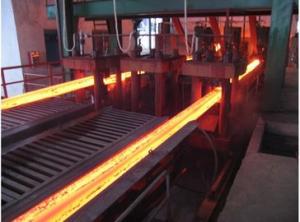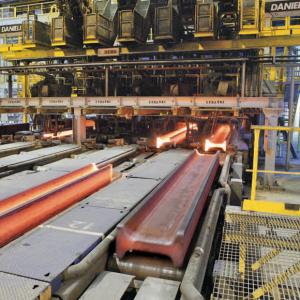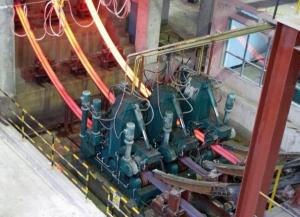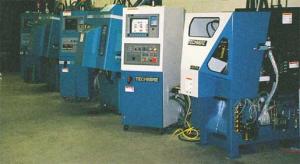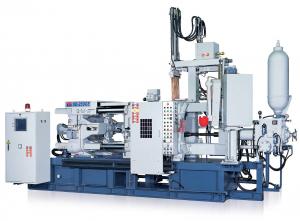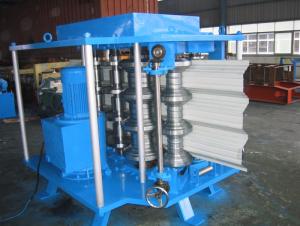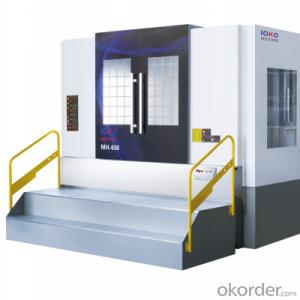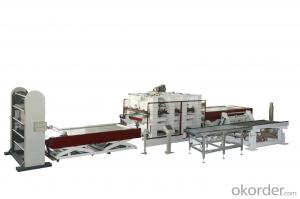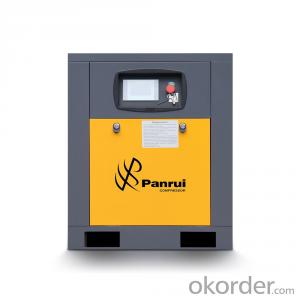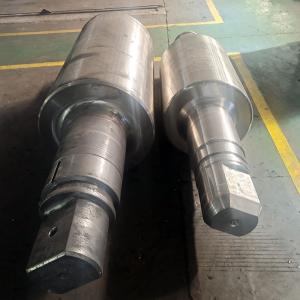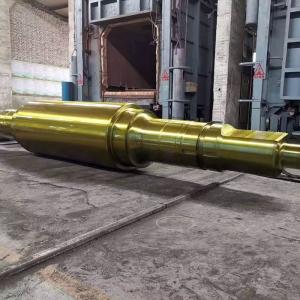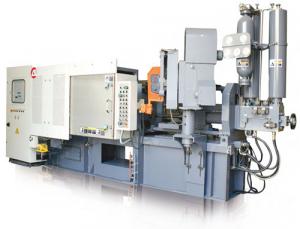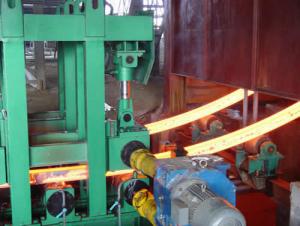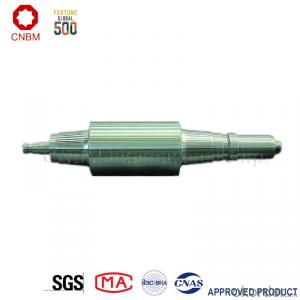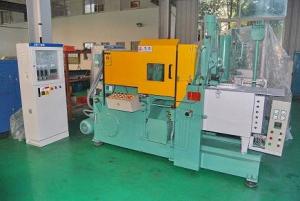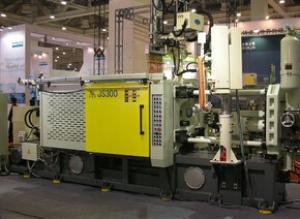Aluminum Pressure Die Casting Machine
OKorder Service Pledge
Quality Product, Order Online Tracking, Timely Delivery
OKorder Financial Service
Credit Rating, Credit Services, Credit Purchasing
You Might Also Like
KS Series High-equipped Die Casting Machine
Specifications
1.Competitive price and high quality,
2.More convenient and safety
3.High shot speed
4.Shorter pressure setting up time
- Q:What are the common cleaning methods used in metal casting machinery?
- Metal casting machinery utilizes various cleaning methods to maintain the quality and integrity of casted metal products. These methods encompass: 1. Shot Blasting: By propelling small metal shots or abrasive particles at high speeds, shot blasting eliminates dirt, rust, scale, and other contaminants from the metal's surface, resulting in a clean and smooth finish. 2. Sand Blasting: Employing high-pressure air or steam, sand blasting projects fine sand particles onto the metal's surface, effectively removing impurities like rust, scale, and paint. This leaves the surface prepared for further processing. 3. Ultrasonic Cleaning: This non-abrasive technique employs high-frequency sound waves to generate tiny bubbles in a cleaning solution. Upon reaching the metal's surface, these bubbles implode, efficiently eliminating dirt, oil, grease, and other contaminants from intricate and hard-to-reach areas. 4. Chemical Cleaning: Dissolving stubborn contaminants such as grease, oil, and carbon deposits, chemical cleaning employs specific cleaning agents or solvents. This method is particularly useful for parts or components that are challenging to clean mechanically. 5. Heat Treatment: Occasionally used as a cleaning method, heat treatment subjects metal parts or components to elevated temperatures. This process burns off or vaporizes impurities or contaminants present on the surface, while simultaneously enhancing the metal's mechanical properties. 6. Vapor Degreasing: Vapor degreasing involves immersing metal parts or components in a solvent-filled vapor degreaser. The solvent vapors condense on the surface, dissolving and removing oils, greases, and other contaminants. These represent some of the prevalent cleaning methods employed in metal casting machinery. The specific method selected depends on factors such as the type of metal being casted, the level of contamination, and the desired surface finish. Regular cleaning and maintenance are vital to ensure the machinery's optimal performance and longevity.
- Q:How is the casting tested for mechanical properties in metal casting machinery?
- The casting is tested for mechanical properties in metal casting machinery through various methods such as tensile testing, hardness testing, impact testing, and metallographic examination. These tests are performed to evaluate the strength, ductility, toughness, and overall quality of the castings.
- Q:How does metal casting machinery ensure uniform cooling and solidification of the metal?
- Metal casting machinery ensures uniform cooling and solidification of the metal through various mechanisms and techniques. One of the key elements in metal casting machinery is the mold. The mold is designed to have a specific shape and structure that allows for efficient cooling and solidification of the metal. It is typically made of materials with high thermal conductivity, such as steel or graphite, which helps to dissipate heat evenly throughout the mold. Another important aspect is the use of cooling channels or water-cooling systems within the mold. These channels or systems are strategically placed in the mold to facilitate the rapid removal of heat from the molten metal. By circulating cool water or coolant through these channels, the heat is transferred away from the metal, promoting uniform cooling and solidification. Additionally, metal casting machinery often incorporates the use of insulating materials or coatings on the mold surfaces. These materials help to minimize heat loss to the surrounding environment, ensuring that the metal cools and solidifies at a consistent rate. This prevents the formation of defects, such as shrinkage or porosity, which can occur when the metal solidifies unevenly. Furthermore, some metal casting machinery utilizes advanced control systems and sensors to monitor and regulate the cooling process. These systems can detect variations in temperature and adjust the cooling rate accordingly, ensuring that the metal solidifies uniformly. By maintaining precise control over the cooling and solidification process, the machinery helps to minimize defects and produce high-quality castings. In summary, metal casting machinery ensures uniform cooling and solidification of the metal through the design of the mold, the use of cooling channels or systems, the incorporation of insulating materials, and the implementation of advanced control systems. These mechanisms work together to remove heat efficiently, promote uniform cooling, and prevent defects, resulting in high-quality castings.
- Q:What is the role of heat treatment equipment in metal casting machinery?
- The role of heat treatment equipment in metal casting machinery cannot be overstated, as it significantly enhances the properties and characteristics of metal components. Metal casting involves the pouring of molten metal into molds to create desired shapes and structures. However, the resulting castings are often not in their final form and require further processing to ensure the desired mechanical properties, such as strength, hardness, and durability. Within metal casting machinery, heat treatment equipment is responsible for subjecting the castings to controlled heating and cooling processes. These processes, including annealing, normalizing, quenching, and tempering, effectively modify the microstructure of the metal, thus influencing its mechanical and physical properties. One of the primary objectives of heat treatment in metal casting machinery is to alleviate internal stresses that may have arisen during the casting process. These stresses, if not properly addressed, can lead to distortion or even failure of the casting. By employing heat treatment, these stresses are effectively eliminated, thereby ensuring that the castings maintain their shape and structural integrity. Furthermore, heat treatment equipment is utilized to refine the grain structure of the metal. Through controlled heating and cooling, the size and distribution of the grains within the metal can be manipulated. This refinement significantly enhances the strength, toughness, and overall mechanical properties of the castings, rendering them more suitable for their intended applications. Moreover, heat treatment can be employed to adjust the hardness of the metal. By utilizing processes such as quenching and tempering, the metal can be hardened or softened to meet specific requirements. For instance, hardened castings are commonly utilized in applications that necessitate resistance to wear and abrasion, while softer castings may be more suitable for applications that require improved machinability. In conclusion, heat treatment equipment in metal casting machinery plays a crucial role in optimizing the properties of castings. It effectively alleviates internal stresses, refines the grain structure, and adjusts the hardness of the metal, ultimately ensuring that the castings meet the desired specifications and performance requirements.
- Q:What are the common surface treatment options available for metal castings?
- Some common surface treatment options available for metal castings include sandblasting, shot blasting, polishing, painting, powder coating, anodizing, plating, and electroplating.
- Q:Can metal casting machinery be used for the production of food industry equipment?
- No, metal casting machinery is typically not suitable for the production of food industry equipment. Food industry equipment requires specific materials and manufacturing processes that adhere to strict sanitary and cleanliness standards. Using metal casting machinery may not meet these requirements, such as the need for corrosion resistance, smooth surfaces, and easy cleaning. Specialized equipment and techniques are typically used for the production of food industry equipment to ensure safety and hygiene standards are met.
- Q:Can metal casting machinery be used for investment casting of copper alloys?
- Yes, metal casting machinery can be used for investment casting of copper alloys.
- Q:What are the different types of gating systems used in metal casting machinery?
- Metal casting machinery utilizes various types of gating systems, each with its own advantages and applications. 1. The sprue serves as the initial channel for pouring molten metal into the mold. It possesses a large diameter for smooth and easy flow and connects to the pouring cup or basin. By minimizing turbulence, sprues ensure a seamless flow of metal into the mold cavity. 2. Runners, connecting the sprue to individual mold cavities, uniformly distribute molten metal to guarantee consistent casting quality. The complexity of the mold and desired flow rate determine whether the runners are straight or branched. 3. In-gates, situated within the runner system, control the flow rate and direction of molten metal into the mold cavity. Their shape and size, such as round, rectangular, or tapered, depend on the casting's geometry and specific requirements. 4. Riser cavities are strategically placed within the mold to compensate for shrinkage during solidification. They serve as reservoirs, providing additional molten metal as the casting cools and contracts. Risers can be open or blind, with size and location determined by factors such as casting size, alloy, and solidification rate. 5. Various gate system variations can be employed based on specific casting requirements. Multiple in-gates ensure balanced and controlled metal flow for larger or complex castings. Hot-top systems utilize insulated reservoirs to maintain molten metal temperature during solidification. Bottom gating, used in gravity casting, minimizes turbulence and enhances casting quality by pouring molten metal from the bottom. Choosing the appropriate gating system relies on factors including casting size, complexity, metal type, and desired quality. The gating system substantially influences the integrity, appearance, and overall performance of the final casting.
- Q:What are the different types of shakeout methods used in metal casting machinery?
- Various shakeout methods are employed in metal casting machinery to efficiently remove sand molds from castings. 1. Vibratory Shakeout: Vibratory equipment is utilized in this method to shake the sand molds loose from the castings. The vibrations aid in breaking up the sand and allowing it to separate from the castings. Vibratory shakeout machines can be customized with different configurations and speeds to accommodate various casting sizes and production requirements. 2. Mechanical Shakeout: This method involves the use of rotating or oscillating drums or shakers to physically shake off the sand molds from the castings. These machines often incorporate paddles or tumbling action to dislodge the sand from the castings. Mechanical shakeout is commonly employed for larger and heavier castings. 3. Thermal Shakeout: In thermal shakeout, high temperatures are applied to the sand molds to detach them from the castings. This method relies on the differential expansion between the sand and the castings when heated. As the sand expands more than the castings, it fractures and breaks away, allowing for easy separation. 4. Pneumatic Shakeout: Compressed air is utilized in pneumatic shakeout to blow the sand molds off the castings. This method is particularly effective for intricate castings or tightly packed sand. The high-pressure air blasts aid in dislodging the sand particles and removing them from the castings. 5. Knockout Machines: Knockout machines, which utilize mechanical impact such as hammering or vibrating plates, are commonly employed in metal casting for shakeout purposes. These machines are suitable for larger and heavier castings that require more force to separate the sand. Each of these shakeout methods possesses its own advantages and disadvantages. The selection of the appropriate method depends on factors such as the size and complexity of the castings, production volume, and desired efficiency. Choosing the right shakeout method is crucial to ensure the successful removal of sand molds and to maintain the quality of the castings.
- Q:Can metal casting machinery be used for casting intricate designs?
- Yes, metal casting machinery can be used for casting intricate designs. Advanced casting techniques and technologies have made it possible to produce intricate and detailed designs using metal casting machinery. These machines can accurately reproduce even the most complex and intricate patterns, allowing for the creation of highly detailed and precise metal castings.
1. Manufacturer Overview |
|
|---|---|
| Location | |
| Year Established | |
| Annual Output Value | |
| Main Markets | |
| Company Certifications | |
2. Manufacturer Certificates |
|
|---|---|
| a) Certification Name | |
| Range | |
| Reference | |
| Validity Period | |
3. Manufacturer Capability |
|
|---|---|
| a)Trade Capacity | |
| Nearest Port | |
| Export Percentage | |
| No.of Employees in Trade Department | |
| Language Spoken: | |
| b)Factory Information | |
| Factory Size: | |
| No. of Production Lines | |
| Contract Manufacturing | |
| Product Price Range | |
Send your message to us
Aluminum Pressure Die Casting Machine
OKorder Service Pledge
Quality Product, Order Online Tracking, Timely Delivery
OKorder Financial Service
Credit Rating, Credit Services, Credit Purchasing
Similar products
New products
Hot products
Hot Searches
Related keywords


